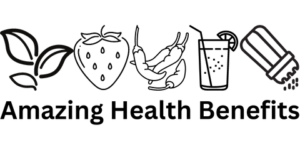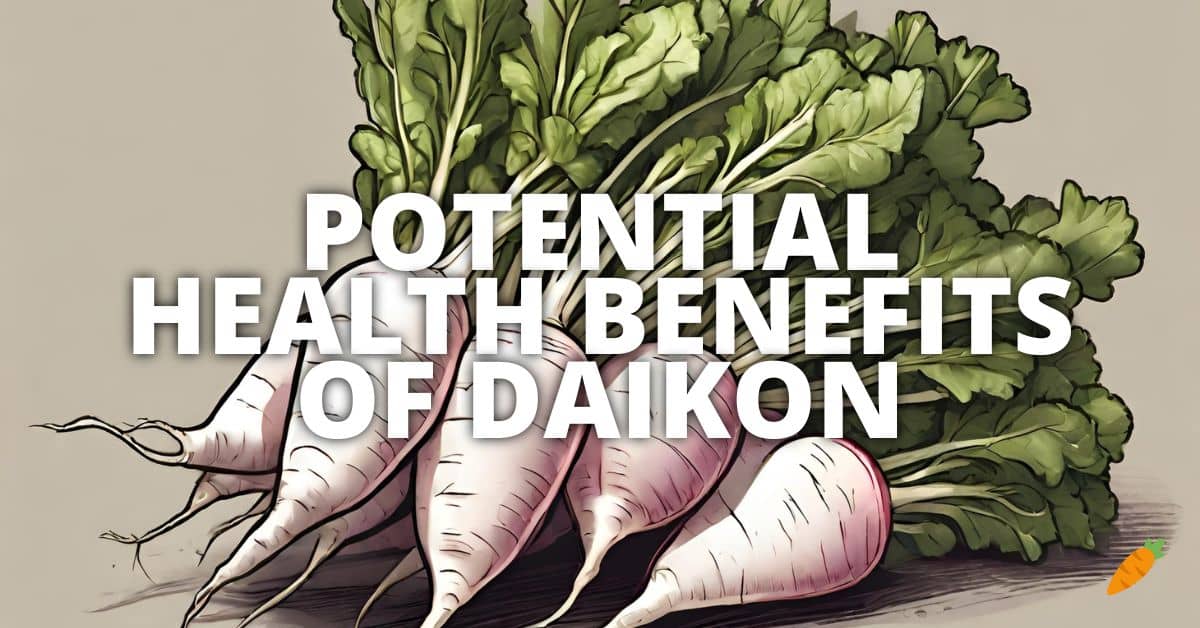Daikon radish, a cornerstone of Asian cuisine, is prized for its mild flavor and versatility in cooking.
It is a common ingredient in dishes such as miso soup, and salads, and as a garnish for sashimi, providing a crunchy texture and a refreshing taste.
Daikon’s adaptability extends to various cooking methods, including pickling, boiling, and roasting.
This vegetable is not only integral to the culinary landscape of countries like Japan, Korea, and China but also carries significant cultural importance, often used in traditional medicine and festive meals.
The global spread of Asian cuisine has introduced daikon to new audiences, increasing its popularity as a healthful and flavorful ingredient.
1. Daikon Nutrition: A Closer Look
Daikon radish, also known as white radish, is a nutritional powerhouse, offering a low-calorie option packed with essential vitamins and minerals.
A single serving of daikon provides a significant amount of vitamin C, crucial for immune health, along with potassium, which supports heart health and blood pressure regulation.
Its nutrient profile is enhanced by the presence of magnesium, a mineral essential for over 300 biochemical reactions in the body, including energy production and muscle function.
Phosphorus, another key component, is important for healthy bones and teeth, alongside small but beneficial amounts of calcium and iron.
The vegetable is also a good source of dietary fiber, aiding in digestive health and contributing to a feeling of fullness, which can aid in weight management.
Additionally, daikon contains compounds that may support respiratory health, potentially offering relief for conditions such as asthma or congestion.
Moreover, daikon’s high water content helps hydrate the body, making it an excellent food for maintaining overall health and well-being.
📙 Potential Health Benefits Of Chonggak Radish
2. The Digestion Benefits of Daikon Radish
Daikon radish supports digestive health in several ways, thanks to its rich enzyme content, including amylase and esterase, which aid in breaking down complex carbohydrates, fats, and proteins.
Its high fiber content promotes regular bowel movements, helping to prevent constipation and maintain a healthy digestive tract.
Consuming daikon can stimulate the appetite and aid in the efficient absorption of nutrients from other foods.
The radish’s anti-inflammatory properties can also soothe the digestive system, reducing bloating and other digestive discomforts.
By including daikon in the diet, individuals can enhance their digestive health, leading to better overall well-being.
📙 Potential Health Benefits Of Malunggay
3. How Daikon Helps Detoxify the Body
Daikon radish is known for its detoxifying effects, attributed to compounds that help cleanse the blood and support liver and kidney function.
It acts as a natural diuretic, promoting the elimination of toxins through increased urine production.
The antioxidants in daikon, including vitamin C and flavonoids, play a crucial role in protecting the body from oxidative stress and aiding in the detoxification process.
Its anti-inflammatory properties help reduce the burden on the body’s detox organs, further enhancing its cleansing effects.
Incorporating daikon into the diet can be particularly beneficial after periods of overindulgence or exposure to pollutants, aiding in the body’s natural detoxification pathways.
📙 Potential Health Benefits Of Editan Leaf
4. Daikon and Bone Health: A Crucial Connection
Daikon radish contributes significantly to bone health due to its calcium and potassium content, minerals vital for maintaining bone density and preventing osteoporosis.
The presence of vitamin C in daikon not only boosts collagen production but also plays a critical role in the repair and maintenance of bones.
Its anti-inflammatory properties may further benefit joint health, reducing the risk of conditions such as arthritis.
Regular consumption of daikon can be a strategic part of a diet aimed at preserving bone strength and promoting overall skeletal health.
As people age, incorporating foods like daikon that support bone health becomes increasingly important to maintain mobility and quality of life.
📙 Potential Health Benefits Of Kale Microgreens
5. Exploring the Uses of Daikon in Healthy Diets
Daikon’s versatility in the kitchen is unmatched, serving as a nutritious component of salads, soups, and stir-fries, and as a unique ingredient in pickles and fermented dishes.
Its mild taste and refreshing crunch make it an excellent vehicle for flavors in a variety of culinary traditions beyond Asian cuisine.
Health-conscious cooks appreciate daikon as a low-calorie, high-fiber alternative to starchy vegetables, offering a satisfying crunch without the added calories.
It can be spiralized into noodles for a gluten-free pasta alternative or blended into smoothies for a nutrient boost.
The leaves of the daikon plant are also nutritious, rich in vitamin C and calcium, and can be used in similar ways to other leafy greens, adding value and versatility to this remarkable vegetable.
📙 Potential Health Benefits Of Garlic And Olive Oil
6. Radish Nutrition: Comparing Daikon with Other Varieties
While all radishes, including the small red varieties, offer health benefits, daikon’s nutritional profile is especially noteworthy for its higher vitamin C content and its milder, less peppery flavor.
This makes daikon a preferred option for those with sensitive digestive systems or for recipes requiring a subtler radish taste.
Daikon radishes provide more fiber per serving compared to their smaller counterparts, making them a superior choice for digestive health and weight management.
Their larger size also means that daikon can be used in a wider range of culinary applications, from raw preparations to long-cooked dishes.
Understanding the nutritional differences between radish varieties can help individuals tailor their diets to meet specific health goals, with daikon being a standout option for those looking to maximize their vegetable intake.
📙 Potential Health Benefits Of Pickled Jalapenos
7. Daikon’s Role in Reducing Inflammation and Enhancing Immunity
Daikon radish plays a significant role in reducing inflammation and boosting the immune system, thanks to its high content of vitamin C and other antioxidants.
These compounds help fight free radicals, reducing oxidative stress and lowering the risk of chronic diseases such as heart disease and certain cancers.
The anti-inflammatory properties of daikon may also alleviate symptoms of conditions like arthritis and asthma, contributing to improved overall health.
Its immune-boosting effects are particularly beneficial during cold and flu season, as consuming foods rich in vitamin C can enhance the body’s ability to fight infections.
By incorporating daikon into the diet, individuals can support their body’s natural defenses and promote a state of health and well-being.
📙 Potential Health Benefits Of Garden Egg And Groundnut
8. Daikon’s Impact on Weight Management and Metabolism
Daikon radish is an excellent food choice for those looking to manage their weight, thanks to its low-calorie content and high fiber, which promotes feelings of fullness and reduces overall calorie intake.
Its fiber content not only aids in digestion but also helps regulate blood sugar levels, preventing spikes that can lead to cravings and overeating.
The inclusion of daikon in a balanced diet can boost metabolism, thanks to its ability to aid in the efficient digestion and absorption of nutrients.
This metabolic support makes it easier for the body to burn calories, contributing to weight loss or maintenance.
Furthermore, daikon’s versatility in recipes ensures that it can be easily incorporated into a diet focused on healthy weight management, offering a satisfying crunch without the added fats or sugars.
📙 Potential Health Benefits Of Cocoyam Leaves
9. The Antioxidant Power of Daikon
The antioxidant properties of daikon radish are significant, with its vitamin C, flavonoids, and other compounds working to protect the body from harmful free radicals.
These antioxidants play a critical role in preventing cellular damage, which can lead to chronic diseases such as cancer, heart disease, and neurodegenerative disorders.
By reducing oxidative stress, daikon contributes to the maintenance of good health and the prevention of aging-related deterioration.
Its anti-inflammatory effects further bolster the body’s defense mechanisms, making daikon a valuable addition to a diet focused on long-term health and disease prevention.
Regular consumption of antioxidant-rich foods like daikon is a proactive approach to maintaining health and vitality.
📙 Potential Health Benefits Of Cucumber And Groundnut
10. The Versatility of Daikon in Recipes and Uses
Daikon radish’s culinary flexibility makes it a favorite among chefs and home cooks alike.
It can be used in a myriad of ways, from raw in salads for a crisp, refreshing bite to cooked in soups and stews where it absorbs flavors beautifully.
Daikon can also be pickled, offering a tangy addition to meals, or shredded and used in pancakes or fritters for a delightful texture contrast.
Its ability to be transformed into low-carbohydrate noodles makes it a popular choice for those following keto, paleo, or gluten-free diets.
The leaves of the daikon, rich in nutrients, can be sautéed or added to soups, ensuring that no part of this versatile vegetable goes to waste.
📚 Antioxidant And Choleretic Properties Of Raphanus Sativus L. Sprout (Kaiware Daikon) Extract
💡 Conclusion
Incorporating daikon radish into your diet offers a multitude of health benefits, from aiding digestion and supporting detoxification to enhancing bone health and boosting the immune system.
Its nutritional profile, rich in vitamins, minerals, and antioxidants, makes it a valuable food for managing weight, reducing inflammation, and protecting against chronic diseases.
The versatility of daikon in culinary applications ensures that it can be enjoyed in a variety of dishes, appealing to a wide range of tastes and dietary preferences.
By embracing the health benefits of daikon, individuals can enjoy not only the flavors it brings to their meals but also the positive impact it has on their overall health.
Whether you are exploring Asian cuisine or seeking nutritious additions to your diet, daikon radish is a choice that offers both delightful taste and significant health advantages.
⛑️ Safety First
While daikon radish offers numerous health benefits, it’s important to consider safety precautions to ensure it’s consumed in a manner that supports overall well-being.
Individuals with a history of gallstones should exercise caution, as daikon, like other cruciferous vegetables, contains compounds that may influence the formation of gallstones.
Those with thyroid conditions should also be mindful, as excessive consumption of cruciferous vegetables can impact iodine absorption, potentially affecting thyroid function.
As with any dietary change, introducing daikon into your diet gradually can help you monitor for any adverse reactions, such as allergies or digestive upset.
Finally, consulting with a healthcare provider before significantly altering your diet can provide personalized advice, ensuring that the inclusion of daikon complements your health needs and goals without unintended consequences.
⚠️ Content Disclaimer
The information provided in this article is intended for educational and informational purposes only and should not be construed as medical advice, diagnosis, or treatment.
While care has been taken to ensure the accuracy and reliability of the content, the authors and publishers are not responsible for any errors or omissions or any outcomes resulting from the use of this information.
Readers are encouraged to consult with healthcare professionals for any medical concerns or before making any changes to their healthcare regimen.
The views expressed in this article do not necessarily reflect the latest research or medical guidelines.
By reading this content, you acknowledge and agree that the authors and publishers are not liable for any damages or losses associated with the use of this information.

